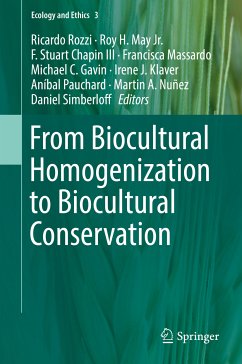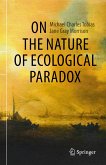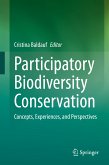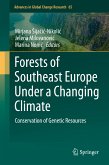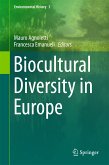First (1), biocultural homogenization, a global, but little perceived, driver of biological and cultural diversity loss that frequently entail social and environmental injustices....
Second (2), biocultural ethics that considers -ontologically and axiologically- the complex interrelationships between habits, habitats, and co-inhabitants that shape their identity and well-being. In ethics, in ancient terms of Homer and Heraclitus, the habit was linked to habitats. These habits affect the co-inhabitants, human and other-than-human, and the diversity of inhabitants. The biocultural ethics aims to recover the early meaning of ethic, derived from ethos-or the den of an animal-that converges to native American and other traditional understandings of ethics...
Third (3), biocultural conservation that seeks social and ecological well-being through the conservation of biological and cultural diversity and their interrelationships. ...
Biocultural ethics investigates and evaluates the ecological and social causes and consequences of both biocultural homogenization and biocultural conservation. These three biocultural terms provide a conceptual framework and a methodological approach for interdisciplinary teamwork among ecologists, philosophers and other participants to investigate, and also to reorient, eco-social paths of environmental change towards a sustainability of life.
Dieser Download kann aus rechtlichen Gründen nur mit Rechnungsadresse in A, B, BG, CY, CZ, D, DK, EW, E, FIN, F, GR, HR, H, IRL, I, LT, L, LR, M, NL, PL, P, R, S, SLO, SK ausgeliefert werden.

